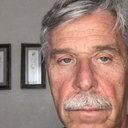Respiratory sleep disorders in children and role of the paediatric dentist.
Palavras-chave
Resumo
Snoring and obstructive sleep apnoea (OSA) in children are relatively frequent, with a prevalence of 27% and 5.7%, respectively as reported by different studies. The clinical consequences of the above are sleeping disturbances, daytime somnolence and cognitive and behavioural disorders, with consequent poor school performance. Snoring and obstructive sleep apnoea have serious social implications given their correlations with adenotonsillar hypertrophy, allergies of the upper airways, obesity and dentoskeletal anomalies. The interceptive dental and orthodontic treatment, possibly coupled with the referral to an otolaryngologist and body weight control, is able to solve the respiratory issue and related clinical consequences. OSA has been recently added to the classification of sleeping disorders of the American Academy of Sleep Medicine (ICSD-3) among the breathing-related sleep disorders. This classification distinguishes between obstructive sleep apnoea in adults and children, since OSA in the paediatric population exhibits characteristics which are specific to growing subjects. In addition, OSA poses an important risk factor for the overall health and the physical and mental development of the child. Breathing-related sleep disorders in children not only represent a possible cause of craniofacial growth alteration-which is of interest from a dental standpoint-but they may also affect the general health and development of the child. This is especially true for the neurocognitive, behavioural and metabolic aspects, to the extent that obstructive sleep apnoea is nowadays considered a neurobehavioural syndrome. The correlation between obesity and breathing-related sleep disorders in the paediatric age has been long-established. One important cause of OSA is the increased resistance of the upper airway, which might be due to the presence of narrow hard palate, small and/or retropositioned mandible, adenotonsillar hypertrophy or a combination of the above. In obstructive sleep disorders the presence of highly predisposing anatomic features is associated with a dysregulation of neuromuscular factors. In fact, for both adults and children there is a comorbidity between OSA and nocturnal bruxisim. Bruxism is included among the sleep-related movement disorders in the third International Classification of Sleep Disorders (ICSD-3). According to the recent literature, nocturnal bruxism could itself affect the sleeping pattern, with consequences for the overall health, growth and quality of life of the child. All of these factors can be identified and treated by the dentist, in collaboration with the otolaryngologist and the paediatrician. Paediatric dentists have an important role in the diagnosis of breathing-related sleep disorders through evaluation of the predisposing skeletal factors, especially in the case of small upper maxillary and small and/or retropositioned mandible. The study of distinguished authors of the Bambin Gesù Hospital in Rome, Italy, that we publish in this issue on the correlation between cephalometric variables and severity of OSA is a further confirmation of the need of an interdisciplinary approach to this disorder, which is often diagnosed by the paediatric dentist.


